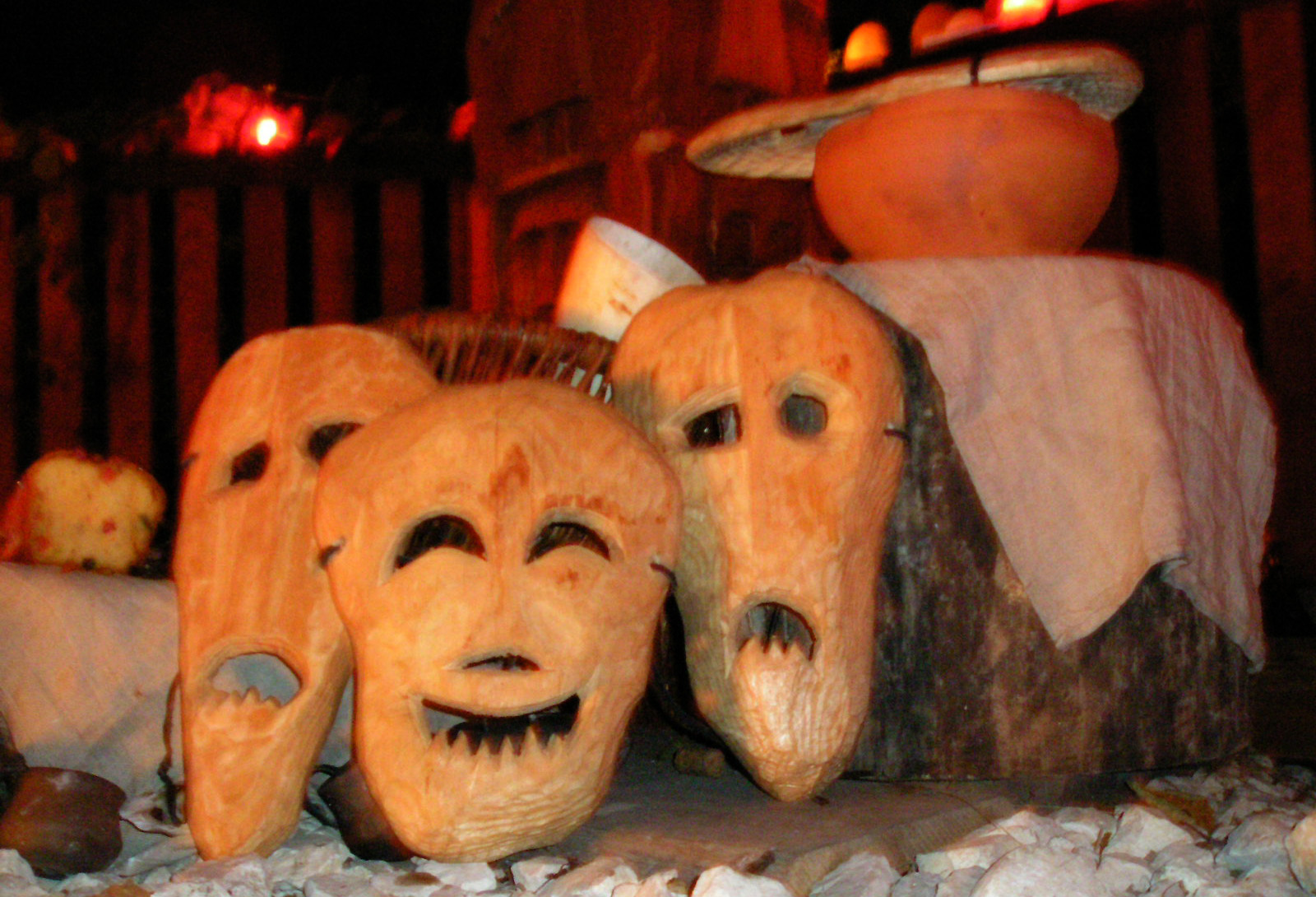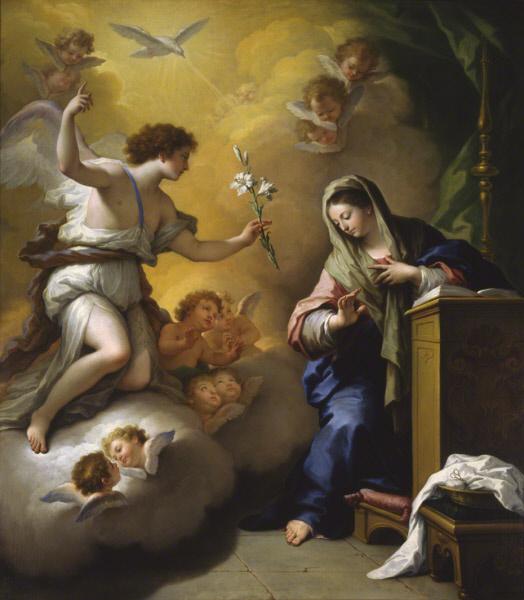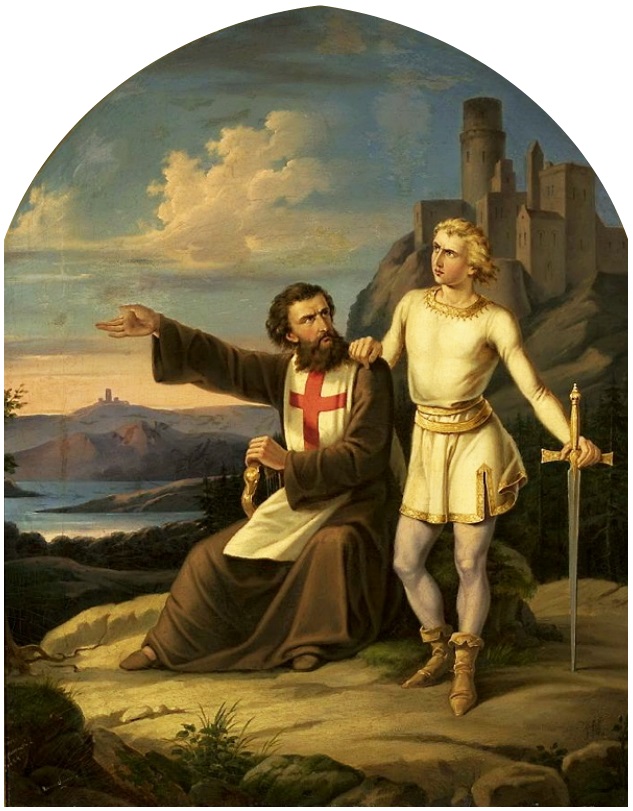|
Dziady (poem)
''Dziady'' (, ''Forefathers' Eve'') is a poetic drama by the Polish poet Adam Mickiewicz. It is considered one of the greatest works of both Polish and European Romanticism.G. Sand, ''Goethe - Byron - Mickiewicz'' in ''Revue des Deux Mondes'', 1 December 1839. To George Sand and Georg Brandes, ''Dziady'' was a supreme realization of Romantic drama theory, to be ranked with such works as Goethe's ''Faust'' and Byron's ''Manfred''. The drama's title refers to ''Dziady'', an ancient Slavic and Lithuanian feast commemorating the dead (the "forefathers"). The drama has four parts, the first of which was never finished. Parts I, II and IV were influenced by Gothic fiction and Byron's poetry. Part III joins historiosophical and individual visions of pain and annexation, especially under the 18th-century partitions of Poland. Part III was written ten years after the others and differs greatly from them. The first to have been composed is "Dziady, Part II," dedicated chiefly to the ''D ... [...More Info...] [...Related Items...] OR: [Wikipedia] [Google] [Baidu] |
DZIADY Adam Mickiewicz – Nie Znałeś Litości Panie!
Dziady (Belarusian: , Russian: , Ukrainian: , pl, Dziady; lit. "grandfathers, eldfathers", sometimes translated as Forefathers' Eve) is a term in Slavic folklore for the spirits of the ancestors and a collection of pre-Christian rites, rituals and customs that were dedicated to them. The essence of these rituals was the "communion of the living with the dead", namely, the establishment of relationships with the souls of the ancestors, periodically returning to their headquarters from the times of their lives. The aim of the ritual activities was to win the favor of the deceased, who were considered to be caretakers in the sphere of fertility. The name "dziady" was used in particular dialects mainly in Poland, Belarus, Polesia, Russia and Ukraine (sometimes also in border areas, e.g. Podlachia, Smoleńsk Oblast, Aukštaitija), but under different other names (''pomynky'', ''przewody'', '' radonitsa'', '' zaduszki'') there were very similar ritual practices, common among ... [...More Info...] [...Related Items...] OR: [Wikipedia] [Google] [Baidu] |
1968 Polish Political Crisis
The Polish 1968 political crisis, also known in Poland as March 1968, Students' March, or March events ( pl, Marzec 1968; studencki Marzec; wydarzenia marcowe), was a series of major student, intellectual and other protests against the ruling Polish United Workers' Party of the Polish People's Republic. The crisis led to the suppression of student strikes by security forces in all major academic centres across the country and the subsequent repression of the Polish dissident movement. It was also accompanied by mass emigration following an antisemitic (branded " anti-Zionist") campaign waged by the minister of internal affairs, General Mieczysław Moczar, with the approval of First Secretary Władysław Gomułka of the Polish United Workers' Party (PZPR). The protests overlapped with the events of the Prague Spring in neighboring Czechoslovakia – raising new hopes of democratic reforms among the intelligentsia. The Czechoslovak unrest culminated in the Warsaw Pact invasion of Cz ... [...More Info...] [...Related Items...] OR: [Wikipedia] [Google] [Baidu] |
Satan
Satan,, ; grc, ὁ σατανᾶς or , ; ar, شيطانالخَنَّاس , also known as Devil in Christianity, the Devil, and sometimes also called Lucifer in Christianity, is an non-physical entity, entity in the Abrahamic religions that seduces humans into sin or falsehood. In Judaism, Satan is seen as an agent subservient to God in Judaism, God, typically regarded as a metaphor for the ''yetzer hara'', or "evil inclination." In Christianity and Islam, he is usually seen as a fallen angel or jinn who has rebelled against God in Abrahamic religions, God, who nevertheless allows him temporary power over the fallen world and a host of demons. In the Quran, Shaitan, also known as Iblis, is an entity made of fire who was cast out of Heaven because he refused to bow before the newly created Adam in Islam, Adam and incites humans to sin by infecting their minds with ''waswās'' ("evil suggestions"). A figure known as ''ha-satan'' ("the satan") first appears in the Hebrew B ... [...More Info...] [...Related Items...] OR: [Wikipedia] [Google] [Baidu] |
Archangel
Archangels () are the second lowest rank of angel in the hierarchy of angels. The word ''archangel'' itself is usually associated with the Abrahamic religions, but beings that are very similar to archangels are found in a number of other religious traditions. Archangels also appear in the religious texts of Gnosticism. The English word ''archangel'' is derived from Greek ἀρχάγγελος (arkhángelos), the Greek prefix " arch-" meaning "chief". A common misconception is that archangels are the highest rank of angel, this misconception stems from John Milton's '' Paradise Lost'' and likely confusion over the "arch-" prefix. Description Michael and Gabriel are recognized as archangels in Judaism, Islam, and by most Christians. Some Protestants consider Michael to be the only archangel. Raphael—mentioned in the deuterocanonical Book of Tobit—is also recognized as a chief angel in the Catholic and Eastern Orthodox churches. Gabriel, Michael, and Raphael are venerated ... [...More Info...] [...Related Items...] OR: [Wikipedia] [Google] [Baidu] |
Christ
Jesus, likely from he, יֵשׁוּעַ, translit=Yēšūaʿ, label=Hebrew/Aramaic ( AD 30 or 33), also referred to as Jesus Christ or Jesus of Nazareth (among other Names and titles of Jesus in the New Testament, names and titles), was a first-century Jews, Jewish preacher and religious leader; he is the central figure of Christianity, the Major religious groups, world's largest religion. Most Christians believe he is the Incarnation (Christianity), incarnation of God the Son and the awaited Messiah#Christianity, Messiah (the Christ (title), Christ) prophesied in the Hebrew Bible. Virtually all modern scholars of antiquity agree that Historicity of Jesus, Jesus existed historically. Quest for the historical Jesus, Research into the historical Jesus has yielded some uncertainty on the historical reliability of the Gospels and on how closely the Jesus portrayed in the New Testament reflects the historical Jesus, as the only detailed records of Jesus' life are contained in ... [...More Info...] [...Related Items...] OR: [Wikipedia] [Google] [Baidu] |
Tsars Of Russia
This is a list of all reigning monarchs in the history of Russia. It includes the princes of medieval Rus′ state (both centralised, known as Kievan Rus′ and feudal, when the political center moved northeast to Vladimir and finally to Moscow), tsars, and emperors of Russia. The list begins with the semi-legendary prince Rurik of Novgorod, sometime in the mid 9th century ( 862) and ends with emperor Nicholas II who abdicated in 1917, and was executed with his family in 1918. The vast territory known today as Russia covers an area that has been ruled by various polities, including Kievan Rus', the Grand Duchy of Moscow, the Tsardom of Russia and the Russian Empire, and the sovereigns of these many nations and throughout their histories have used likewise as wide a range of titles in their positions as chief magistrates of a country. Some of the earliest titles include ''kniaz'' and ''velikiy kniaz'', which mean "prince" and "grand prince" respectively but are often rende ... [...More Info...] [...Related Items...] OR: [Wikipedia] [Google] [Baidu] |
Siberia
Siberia ( ; rus, Сибирь, r=Sibir', p=sʲɪˈbʲirʲ, a=Ru-Сибирь.ogg) is an extensive geographical region, constituting all of North Asia, from the Ural Mountains in the west to the Pacific Ocean in the east. It has been a part of Russia since the latter half of the 16th century, after the Russians conquered lands east of the Ural Mountains. Siberia is vast and sparsely populated, covering an area of over , but home to merely one-fifth of Russia's population. Novosibirsk, Krasnoyarsk and Omsk are the largest cities in the region. Because Siberia is a geographic and historic region and not a political entity, there is no single precise definition of its territorial borders. Traditionally, Siberia extends eastwards from the Ural Mountains to the Pacific Ocean, and includes most of the drainage basin of the Arctic Ocean. The river Yenisey divides Siberia into two parts, Western and Eastern. Siberia stretches southwards from the Arctic Ocean to the hills of north-ce ... [...More Info...] [...Related Items...] OR: [Wikipedia] [Google] [Baidu] |
Konrad Wallenrod
''Konrad Wallenrod'' is an 1828 narrative poem, in Polish, by Adam Mickiewicz, set in the 14th-century Grand Duchy of Lithuania. Mickiewicz wrote it, while living in St. Petersburg, Russia, in protest against the late-18th-century partitions of the Polish–Lithuanian Commonwealth by the Russian Empire, the Kingdom of Prussia, and the Habsburg monarchy. Mickiewicz had been exiled to St. Petersburg for his participation in the Philomaths organization at Vilnius University. The poem helped inspire the Lithuanian and Polish November 1830 Uprising against Russian rule. Though its subversive theme was apparent to most readers, the poem escaped censorship due to conflicts among the censors and, in the second edition, a prefatory homage to Tsar Nicholas I. Though Mickiewicz later disparaged the work, its cultural influence in Poland persists. Plot In a preface, Mickiewicz briefly outlines the history of the region, describing the interactions among the Lithuanians, Prussians, Pole ... [...More Info...] [...Related Items...] OR: [Wikipedia] [Google] [Baidu] |
November Insurrection
The November Uprising (1830–31), also known as the Polish–Russian War 1830–31 or the Cadet Revolution, was an armed rebellion in the heartland of partitioned Poland against the Russian Empire. The uprising began on 29 November 1830 in Warsaw when young Polish officers from the military academy of the Army of Congress Poland revolted, led by Lieutenant Piotr Wysocki. Large segments of the peoples of Lithuania, Belarus, and the Right-bank Ukraine soon joined the uprising. Although the insurgents achieved local successes, a numerically superior Imperial Russian Army under Ivan Paskevich eventually crushed the uprising. "Polish Uprising of 1830–31." ''The Great Soviet Encyclopedia'', 3rd Edition (1970–1979). Gal ... [...More Info...] [...Related Items...] OR: [Wikipedia] [Google] [Baidu] |
Polish Literature
Polish literature is the literary tradition of Poland. Most Polish literature has been written in the Polish language, though other languages used in Poland over the centuries have also contributed to Polish literary traditions, including Latin, Yiddish, Lithuanian, Russian, German and Esperanto. According to Czesław Miłosz, for centuries Polish literature focused more on drama and poetic self-expression than on fiction (dominant in the English speaking world). The reasons were manifold but mostly rested on the historical circumstances of the nation. Polish writers typically have had a more profound range of choices to motivate them to write, including past cataclysms of extraordinary violence that swept Poland (as the crossroads of Europe), but also, Poland's collective incongruities demanding an adequate reaction from the writing communities of any given period.Czesław Miłosz ''The History of Polish Literature.''Google Books preview. ''University of California Press'', Berke ... [...More Info...] [...Related Items...] OR: [Wikipedia] [Google] [Baidu] |
Wilno - W Bazylianskiej Celi
Vilnius ( , ; see also other names) is the capital and largest city of Lithuania, with a population of 592,389 (according to the state register) or 625,107 (according to the municipality of Vilnius). The population of Vilnius's functional urban area, which stretches beyond the city limits, is estimated at 718,507 (as of 2020), while according to the Vilnius territorial health insurance fund, there were 753,875 permanent inhabitants as of November 2022 in Vilnius city and Vilnius district municipalities combined. Vilnius is situated in southeastern Lithuania and is the second-largest city in the Baltic states, but according to the Bank of Latvia is expected to become the largest before 2025. It is the seat of Lithuania's national government and the Vilnius District Municipality. Vilnius is known for the architecture in its Old Town, declared a UNESCO World Heritage Site in 1994. The city was noted for #Demographics, its multicultural population already in the time of the Polis ... [...More Info...] [...Related Items...] OR: [Wikipedia] [Google] [Baidu] |









